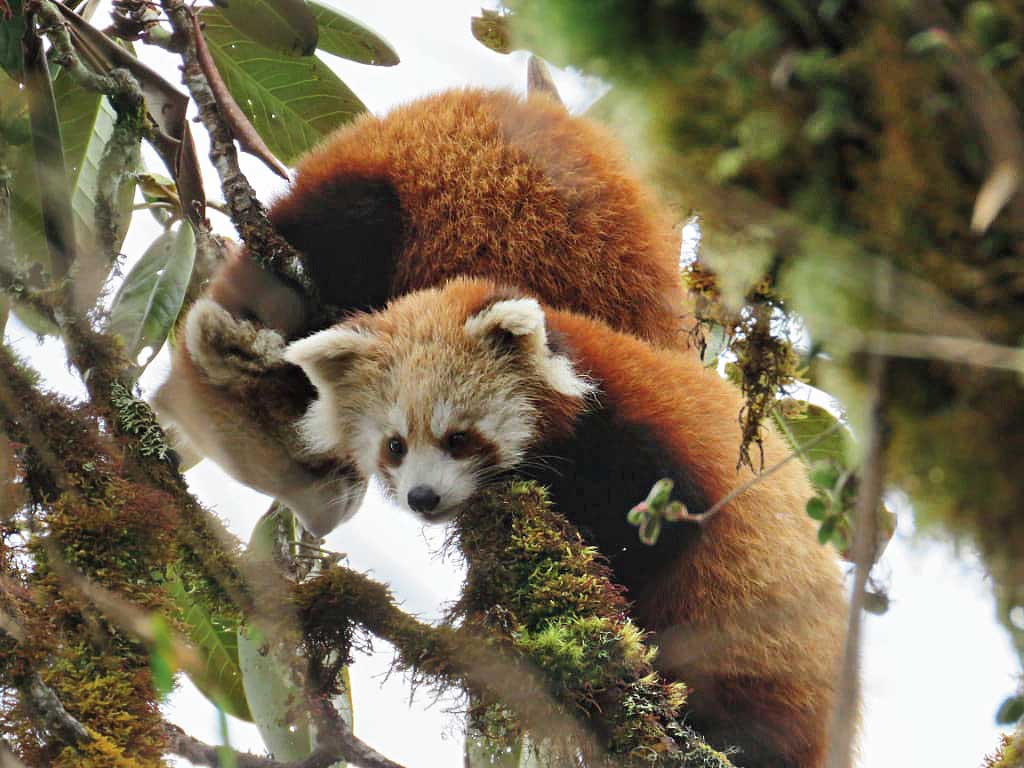The little lovable red panda in Arunachal Pradesh might be out of the red soon.
There is good news regarding red panda conservation coming in from the state.
According to a study done by TRAFFIC, an NGO, on Assessment of Illegal Trade-Related Threats to Red Panda in India and Selected Neighbouring Range Countries, the younger generation in the state does not show much interest in such products.
“This may indicate that traditional demand for such products has reduced over time and might be indicative of the success of awareness campaigns undertaken in the area in the past,” it said.
TRAFFIC is a leading NGO working globally on trade in wild animals and plants in the context of both biodiversity conservation and sustainable development.
Arunachal Pradesh is presumed to hold the largest red panda population in India but there have been very few site-specific studies, those that have taken place mostly restricted to the western part of the state.
In the state, red pandas have been reported from 11 districts.
During the period under review (July 2010–June 2019), no incidence of poaching or illegal wildlife trade in red panda was reported from Bhutan or India.
Saket Badola, the head of TRAFFIC’s India office, told The Telegraph, “Though there are no records of poaching, investigations have revealed that there are incidences of non-targeted incidences of poaching.”
A habitat suitability study in 2018 indicates that most red panda habitat in Arunachal is in the eastern part of the state, while the second-best habitat is in the west, around Tawang district and Eagle Nest Sanctuary.
The study concentrated on assessing the levels of poaching and illegal wildlife trade of the red panda and its derivatives in India, Bhutan and Nepal.
In India, the species is reported from three states, Sikkim, Arunachal Pradesh and Bengal.
The red panda is called habre in parts of Darjeeling and Sikkim, Aaye-michunji in Dibang Valley of Arunachal Pradesh and Matchibel in the Garo hills of Meghalaya.
The estimated global wild population of red panda stands at around 14,500 to 15,000 individuals.
Its population in the wild in India is estimated to be between 5,000 and 6,000 individuals, which is the second largest population after China (around 6,000–7,000 individuals) while 317-582 individuals are also estimated to be inhabiting the forests of Nepal. No estimate of the population in Bhutan and Myanmar has been undertaken.
The study surveyed 38 village markets in Arunachal Pradesh, a minimum of one market in each of the 19 districts was covered, while six markets in Tawang were surveyed. “None of the markets had any parts or products made of parts of the red panda for sale,” it said.
“Two of the traders belonging to the Idu-Mishmi community reported that hats made of red panda pelt, traditionally called Apotolo, were a popular traditional headgear in the past, but are hardly used now,” it said.
Questions on relative awareness about the species revealed that out of the 968 interviewees, 27 per cent reported to have seen the species in the wild or have confirmed knowledge about its presence in their geographic areas, while 73 per cent denied any knowledge about the presence of red pandas in their area, and were also not aware that the species is protected under law.
“Formal/informal interviews revealed that over the past 10 to 15 years, six red pandas were poached through apparently targeted operations in Anjaw district of Arunachal alone. The surveys indicated that currently there is no targeted poaching in the area, however there are incidences where red pandas get accidentally trapped in snares set up for catching other wildlife species, primarily Himalayan musk deer, or Alpine musk deer. Such incidences were narrated in three districts, namely Dibang, Shi Yomi and West Kameng.”
In India, the main trade route involves Tawang, Anjaw, Dibang and the Upper and West Siang Districts of Arunachal Pradesh, leading to China as well as the rather open and inadequately-patrolled western border areas of the states of Sikkim and Bengal with links to Nepal and Bhutan.











